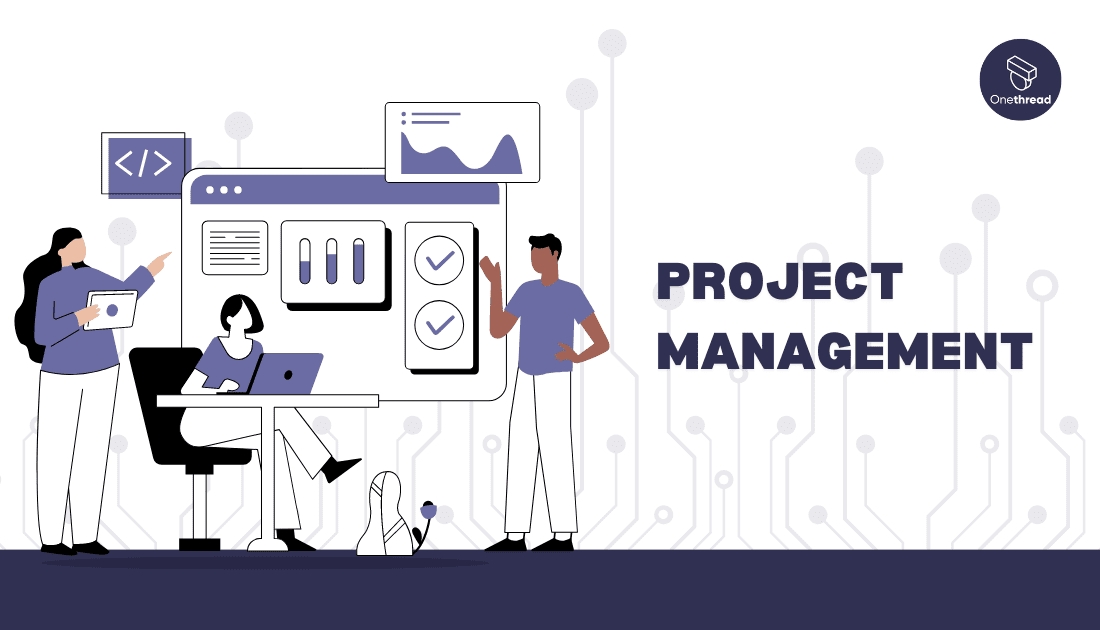In today’s fast-paced and complex business environment, project management has become essential for organizations across various industries.
From small initiatives to large-scale endeavors, effective project management ensures that goals are achieved, resources are utilized efficiently, and stakeholders are satisfied.
In this exclusive guide, we will delve into the world of what is project management, covering its definition, importance, key responsibilities of project managers, benefits, and the tools and software that facilitate successful project execution.
What is Project Management?
At its core, project management is the practice of planning, organizing, and executing projects to achieve specific objectives within defined constraints, such as time, budget, and resources. It involves coordinating various tasks, managing risks, and ensuring effective communication among team members and stakeholders.
Importance of Project Management
Project management plays a crucial role in the success of any endeavor. It provides structure and control, ensuring that projects are completed on time, within budget, and to the satisfaction of stakeholders. Here are some key reasons why project management is important:
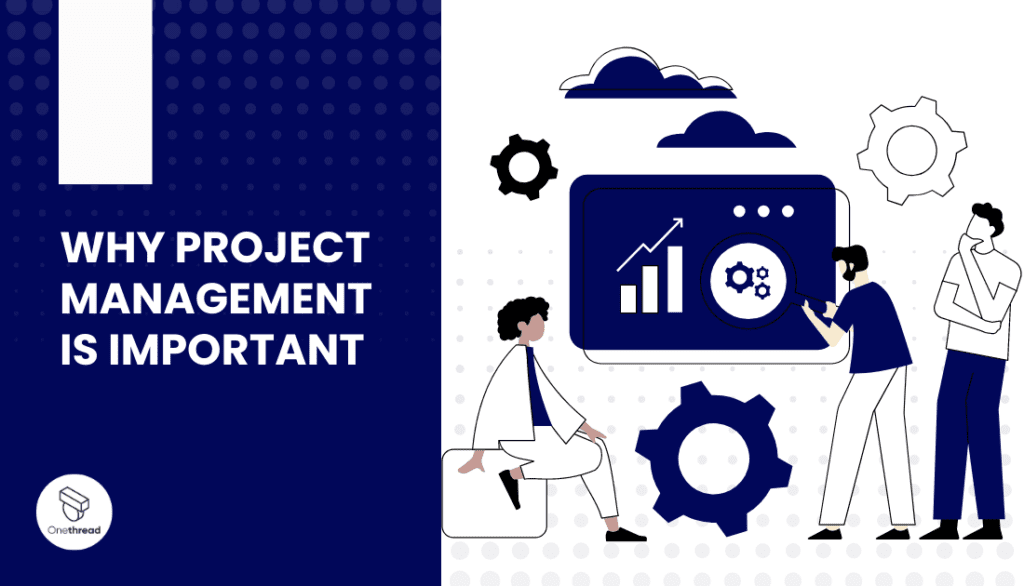
- Efficient Resource Allocation: Project management helps in allocating resources effectively by identifying the right people, skills, and materials required for each task.
- Risk Management: Project managers can proactively address challenges and minimize negative impacts on project outcomes by assessing potential risks and developing mitigation strategies.
- Improved Communication: Effective project management involves clear communication channels, facilitating collaboration among team members, stakeholders, and clients, leading to better project outcomes.
- Meeting Objectives and Delivering Value: With proper planning and execution, project management ensures that project goals and objectives are met, delivering value to the organization and its stakeholders.
Key Responsibilities of a Project Manager
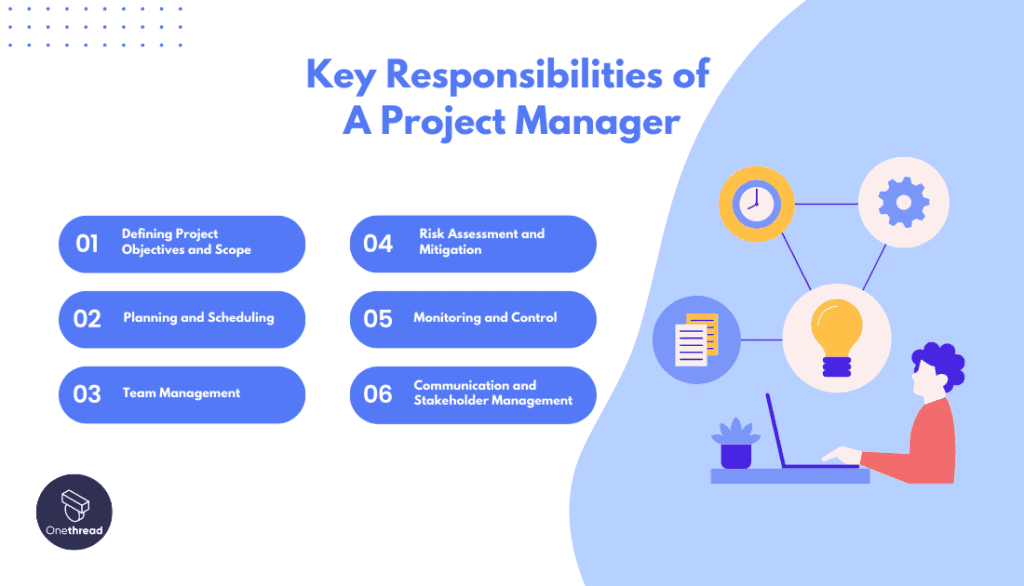
A project manager plays a critical role in overseeing the entire project life cycle, from initiation to closure. Some key responsibilities of a project manager include:
- Defining Project Objectives and Scope: Project managers work closely with stakeholders to understand project requirements, define objectives, and establish the project scope.
- Planning and Scheduling: They develop detailed project plans, including timelines, milestones, and resource allocation, to ensure smooth project execution.
- Team Management: Project managers assemble and lead project teams, assigning tasks, providing guidance, and fostering collaboration to achieve project goals.
- Risk Assessment and Mitigation: They identify potential risks and develop strategies to manage and mitigate them throughout the project life cycle.
- Monitoring and Control: Project managers monitor project progress, track key performance indicators, and implement necessary adjustments to keep the project on track.
- Communication and Stakeholder Management: They facilitate effective communication among team members, stakeholders, and clients, ensuring transparency and managing expectations.
Benefits of Effective Project Management
Effective project management brings numerous benefits to organizations, including:
- Higher Success Rates: Properly managed projects have a higher chance of success, meeting objectives and delivering desired outcomes.
- Improved Efficiency: Project management practices optimize resource allocation, reduce redundancies, and streamline workflows, resulting in increased efficiency.
- Enhanced Collaboration: Project management fosters a productive and positive working environment by promoting collaboration and communication among team members.
- Better Risk Management: Project management helps identify and address potential risks, reducing the likelihood of costly mistakes or project failures.
- Increased Stakeholder Satisfaction: Through effective planning, clear communication, and successful project delivery, project management enhances stakeholder satisfaction and builds trust.
Overview of Project Management Software and Tools
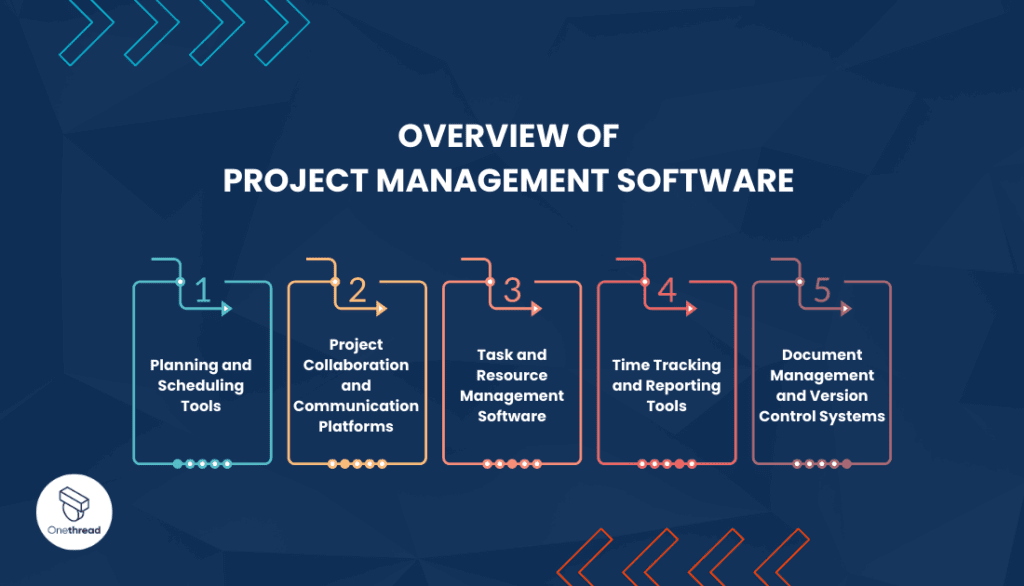
Various project management software and tools are available in the market to support project managers in their tasks. These tools offer features and functionalities that streamline project planning, scheduling, collaboration, and reporting. Some common project management software and tools include:
- Planning and Scheduling Tools: These tools assist in creating project plans, defining tasks, setting timelines, and allocating resources.
- Project Collaboration and Communication Platforms: facilitate real-time collaboration, document sharing, and communication among team members and stakeholders.
- Task and Resource Management Software: These tools help assign tasks, track progress, and manage resource allocation efficiently.
- Time Tracking and Reporting Tools: Time tracking tools allow project managers to monitor the time spent on different tasks, ensuring accurate project reporting and invoicing.
- Document Management and Version Control Systems: These tools ensure proper document organization, version control, and secure storage for project-related files.
Now that we have explored the fundamentals of project management, including its definition, importance, responsibilities of project managers, benefits, and an overview of project management software and tools, let’s dive deeper into the world of projects and project management in the next section.
Understanding Projects and Project Management
To grasp the essence of project management fully, it’s important to understand what constitutes a project and how project management methodologies guide its successful execution.
In this section, we will explore the definition of a project, differentiate projects from routine operations, delve into the project life cycle, and examine both traditional and agile project management approaches.
Defining a Project
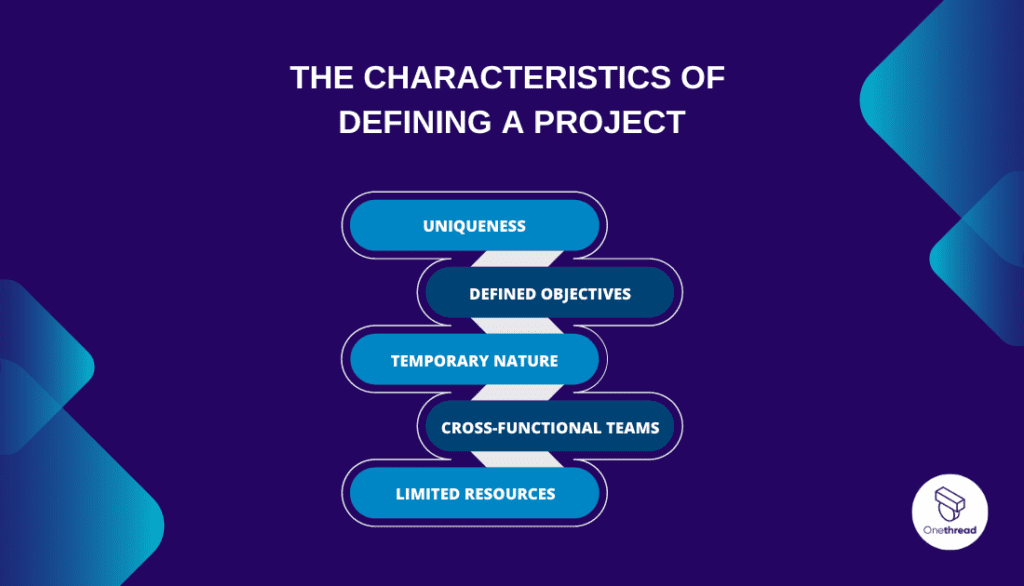
A project can be defined as a temporary endeavor undertaken to create a unique product, service, or result. Projects have specific objectives, a defined timeline, allocated resources, and a dedicated team working toward their successful completion.
Let’s take a closer look at the characteristics that distinguish a project from routine operations:
- Uniqueness: Projects are one-of-a-kind endeavors characterized by their uniqueness. They involve producing deliverables that are distinct from routine operations or previous projects.
- Defined Objectives: Every project has clearly defined objectives that need to be achieved within a specified timeframe. These objectives serve as the guiding principles throughout the project life cycle.
- Temporary Nature: Projects have a defined start and end date, indicating their temporary nature. The project is considered complete once the project objectives are met and deliverables are produced.
- Cross-Functional Teams: Projects require assembling a dedicated team with diverse skills and expertise, usually comprising professionals from different disciplines, working together towards a common goal.
- Limited Resources: Projects operate within specific resource constraints, including budgets, personnel, and materials. Project managers must optimize the utilization of resources to achieve project objectives.
Differentiating Projects from Routine Operations
While projects are temporary and unique endeavors, routine operations are ongoing and repetitive activities that sustain an organization’s day-to-day functions. Here are a few key distinctions between projects and routine operations:
- Purpose: Projects are initiated to achieve specific goals, whereas routine operations aim to maintain regular business operations and processes.
- Duration: Projects have a defined timeline with a start and end date, while routine operations continue indefinitely.
- Flexibility: Projects often involve a degree of flexibility and adaptability to address unforeseen challenges, while routine operations follow established procedures.
- Output: Projects deliver specific outputs, such as a new product, system, or process, while routine operations focus on producing consistent outputs within existing systems.
Project Life Cycle
The project life cycle refers to the stages that a project goes through, from its initiation to its closure. While specific project management methodologies may vary, the project life cycle generally consists of the following phases:
- Project Start-Up: A feasibility study, identification of potential risks, and assessment of the project’s viability are all part of the project initiation phase.
- Project Planning: Project managers create a detailed project plan outlining the tasks, deadlines, resources, and deliverables during the planning phase. They construct a project timeline and a work breakdown structure (WBS) to divide the project into manageable parts.
- Project Execution: The project plan is really put into action during the execution phase. Project managers organize the team, allocate tasks, and make sure that all project activities are completed on time.
- Keeping an eye on a project: Project managers keep a careful eye on the development of the project throughout this phase, track key performance indicators, and contrast the actual outcomes with the intended goals. They recognize any deviations from the project plan, deal with them, manage risks, and implement corrective measures as required.
- Project Completion: The project is formally finished during the closure phase. Project managers deliver the project’s final deliverables, carry out post-project reviews to determine the project’s success and lessons learned, and preserve project materials for future use.
Traditional Project Management Approaches
Traditional project management approaches, such as the Waterfall model, Critical Path Method (CPM), Critical Chain Project Management, and PRINCE2 methodology, have been widely used for decades. Let’s explore these methodologies briefly:
- Waterfall Project Management: The Waterfall model follows a sequential approach, where each project phase is completed before moving on to the next. This method is characterized by its rigid structure, extensive upfront planning, and limited flexibility.
- Critical Path Method (CPM): CPM is a project scheduling technique that identifies the critical path, which is the longest sequence of dependent tasks determining the project’s overall duration. It helps project managers prioritize tasks and ensure timely project completion.
- Critical Chain Project Management: Critical Chain Project Management focuses on managing resource dependencies and constraints to reduce project duration and improve resource utilization. It aims to optimize the project schedule by considering resource availability and potential bottlenecks.
- PRINCE2 Methodology: PRINCE2 (Projects in Controlled Environments) is a process-based methodology providing a structured project management approach. It divides projects into manageable stages, emphasizes clear roles and responsibilities, and promotes regular project reviews.
Agile Project Management
As the business landscape evolved, Agile project management methodologies emerged as a response to the limitations of traditional approaches. Agile methodologies, such as Scrum, Kanban, Lean Project Management, and Six Sigma, prioritize flexibility, collaboration, and adaptive planning. Here’s an overview of these methodologies:
- Understanding Agile Methodologies: Agile methodologies focus on iterative and incremental development, allowing for flexibility and adaptability to changing requirements. They encourage frequent collaboration, feedback, and continuous improvement.
- Scrum Project Management: Scrum is an iterative and incremental Agile framework that emphasizes close collaboration among self-organized teams. It involves short development cycles called sprints, daily stand-up meetings, and regular reviews to ensure project progress.
- Kanban Method: Kanban is a visual Agile framework that uses boards and cards to represent project tasks and their respective stages. It provides transparency and flexibility by visualizing the workflow and limiting work in progress.
- Lean Project Management: Lean Project Management is inspired by Lean Manufacturing principles, focusing on eliminating waste, enhancing efficiency, and delivering value to customers. It aims to maximize customer satisfaction while minimizing resources and efforts.
- Six Sigma: Six Sigma is a data-driven approach to process improvement that aims to minimize defects and variation. It utilizes statistical analysis and quality management principles to improve project performance and deliver consistent results.
By incorporating Agile methodologies into project management practices, organizations can adapt to changing market dynamics, enhance collaboration, and deliver value more efficiently.
Now that we have explored the different project management methodologies and their applications let’s dive into the project management process and best practices in the next section.
Project Management Process and Best Practices
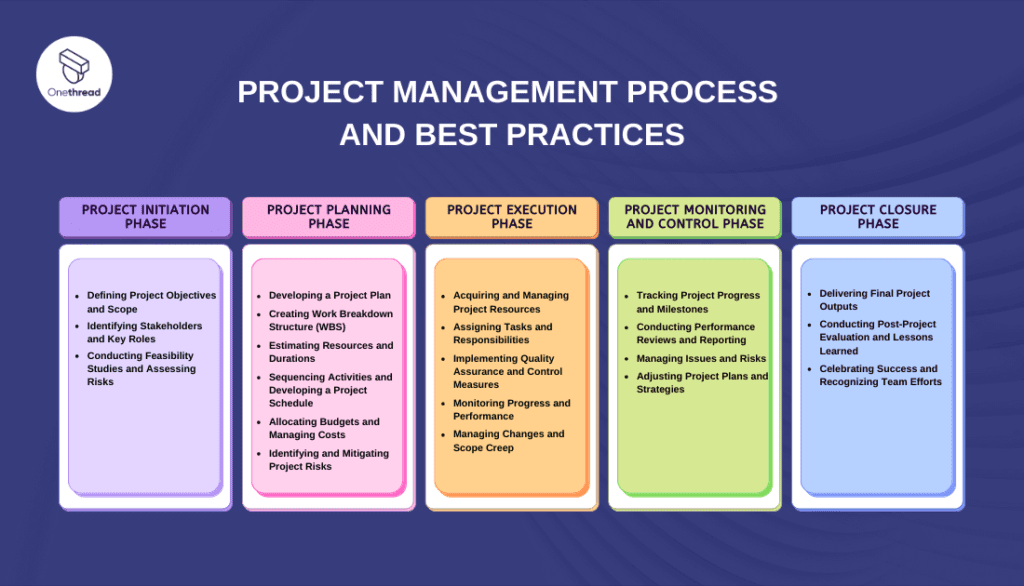
Project managers follow a well-defined process and adhere to best practices to achieve successful project outcomes.
This section will explore the key phases of the project management process, including project initiation, planning, execution, monitoring and control, and closure. We will also discuss best practices that contribute to effective project management.
Project Initiation Phase
The project initiation phase sets the foundation for a successful project. During this phase, project managers and stakeholders work together to define project objectives, scope, and feasibility. Here are the key steps involved in the project initiation phase:
- Defining Project Objectives and Scope: Project managers collaborate with stakeholders to clearly define the project’s goals, objectives, and expected deliverables. This step ensures a shared understanding of the project’s purpose and outcomes.
- Identifying Stakeholders and Key Roles: Stakeholder identification is crucial for effective communication and engagement throughout the project life cycle. Project managers identify key stakeholders and their roles to establish clear lines of communication and ensure their involvement in decision-making processes.
- Conducting Feasibility Studies and Assessing Risks: Project managers analyze the project’s feasibility by conducting feasibility studies, assessing potential risks, and considering constraints such as time, budget, and resources. This step helps identify potential challenges and determine the project’s viability.
Project Planning Phase
The project planning phase involves developing a comprehensive plan that outlines the project’s objectives, tasks, resources, and timeline. Effective planning sets the stage for successful project execution. Here are the key steps involved in the project planning phase:
- Developing a Project Plan: Project managers create a detailed project plan that outlines the project’s objectives, deliverables, milestones, and timeline. This plan serves as a roadmap for the project team and stakeholders.
- Creating Work Breakdown Structure (WBS): A work breakdown structure (WBS) breaks down the project into smaller, manageable components, such as tasks, sub-tasks, and work packages. The WBS helps organize project activities and facilitates resource allocation and task assignment.
- Estimating Resources and Durations: Project managers estimate the resources (human, financial, and material) required for each project task. They also estimate the duration of tasks to create a realistic project schedule.
- Sequencing Activities and Developing a Project Schedule: Project managers sequence project activities based on dependencies and develop a project schedule. This schedule outlines each task’s start and end dates, ensuring a logical flow of work.
- Allocating Budgets and Managing Costs: Project managers allocate budgets for various project activities and monitor costs throughout the project life cycle. They track expenses, ensure cost control, and make adjustments as needed.
- Identifying and Mitigating Project Risks: Risk identification and management are crucial for project success. Project managers identify potential risks, assess their impact and likelihood, and develop risk mitigation strategies to minimize their negative effects.
Project Execution Phase
The project execution phase involves implementing the project plan, coordinating team members, and ensuring tasks are completed according to schedule. Here are the key steps involved in the project execution phase:
- Acquiring and Managing Project Resources: Project managers ensure that the necessary resources, including personnel, equipment, and materials, are available for project execution. They coordinate resource acquisition and monitor resource utilization.
- Assigning Tasks and Responsibilities: Project managers assign tasks to team members based on their skills and expertise. They clearly define responsibilities and ensure that everyone understands their roles in achieving project objectives.
- Implementing Quality Assurance and Control Measures: Quality assurance and control measures are essential to ensure that project deliverables meet the required standards. Project managers establish quality control processes and perform regular inspections and tests.
- Monitoring Progress and Performance: Project managers track project progress, monitor task completion, and assess team performance. They use key performance indicators (KPIs) to measure progress against the project plan and address any deviations promptly.
- Managing Changes and Scope Creep: As projects evolve, changes to scope, requirements, or priorities may arise. Project managers assess change requests, evaluate their impact on the project, and implement proper change management procedures.
Project Monitoring and Control Phase
The project monitoring and control phase involves tracking project progress, managing risks and making necessary adjustments to keep the project on track. Here are the key steps involved in the project monitoring and control phase:
- Tracking Project Progress and Milestones: Project managers monitor project activities, track task completion, and compare actual progress against the planned schedule. They ensure that milestones are met and take corrective actions if necessary.
- Conducting Performance Reviews and Reporting: Regular performance reviews help project managers evaluate project performance and identify areas for improvement. They prepare reports and communicate project status, achievements, and challenges to stakeholders.
- Managing Issues and Risks: Project managers proactively identify and manage project issues and risks. They have mitigation strategies in place to address potential problems and take corrective actions to minimize their impact.
- Adjusting Project Plans and Strategies: If deviations or unexpected events occur, project managers assess their impact on the project and adjust plans and strategies accordingly. They revise the project schedule, resource allocation, or risk management approaches as needed.
Project Closure Phase
The project closure phase marks the formal completion of the project. Project managers ensure that all project deliverables are finalized and accepted by stakeholders. Here are the key steps involved in the project closure phase:
- Delivering Final Project Outputs: Project managers deliver the final project outputs to stakeholders, ensuring that they meet the agreed-upon requirements and quality standards. This includes documentation, reports, products, or services produced during the project.
- Conducting Post-Project Evaluation and Lessons Learned: Project managers conduct a post-project evaluation to assess the project’s success and identify lessons learned. They capture insights, document best practices, and identify areas for improvement in future projects.
- Celebrating Success and Recognizing Team Efforts: Project managers acknowledge the contributions of the project team and celebrate project success. Recognizing team efforts fosters a positive work environment and encourages continuous improvement.
By following these project management process phases and best practices, project managers can effectively guide projects from initiation to closure, achieving successful outcomes and delivering value to stakeholders.
In the next section, we will explore the essential skills that project managers need to possess to excel in their roles.
Essential Skills for Project Managers
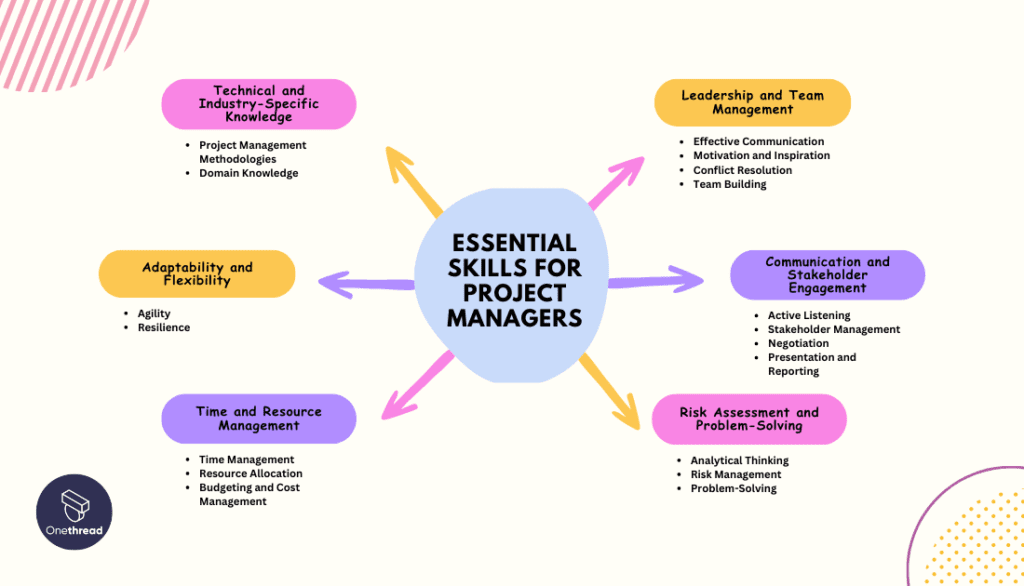
Being a successful project manager requires a unique blend of technical expertise, leadership abilities, and interpersonal skills. In this section, we will explore the essential skills that project managers need to possess to navigate the complexities of project management effectively.
Leadership and Team Management
- Effective Communication: Project managers must be able to communicate clearly and effectively with team members, stakeholders, and clients. They should be able to convey project objectives, expectations, and progress while actively listening to other’s perspectives.
- Motivation and Inspiration: A skilled project manager inspires and motivates team members to achieve their best performance. They create a positive work environment, set a vision for success, and support and recognize team members.
- Conflict Resolution: Projects often involve conflicts and disagreements. Project managers should be skilled in conflict resolution, facilitating constructive discussions, and finding mutually beneficial solutions to maintain team cohesion and project progress.
- Team Building: Building a strong and cohesive project team is essential for success. Project managers need to identify individual strengths, assign roles and responsibilities accordingly, foster collaboration, and promote a sense of belonging and teamwork.
Communication and Stakeholder Engagement
- Active Listening: Project managers should be skilled listeners, actively seeking input and feedback from team members, stakeholders, and clients. They should be open to diverse perspectives and consider them when making decisions.
- Stakeholder Management: Successful project managers effectively engage with stakeholders and manage their expectations. They identify stakeholders, establish clear communication channels, and ensure that their needs and concerns are addressed throughout the project.
- Negotiation: Project managers often need to negotiate with stakeholders and team members to resolve conflicts, align expectations, and secure necessary resources. Strong negotiation skills help in achieving win-win outcomes and maintaining positive relationships.
- Presentation and Reporting: Project managers should proficiently create concise and engaging presentations and reports. They should be able to communicate complex information in a clear and compelling manner to different audiences.
Risk Assessment and Problem-Solving
- Analytical Thinking: Project managers need strong analytical skills to assess risks, identify potential issues, and make informed decisions. They should be able to analyze data, evaluate alternatives, and anticipate potential problems.
- Risk Management: Effective project managers proactively identify and manage risks throughout the project life cycle. They develop risk mitigation strategies, monitor risks, and take appropriate actions to minimize their impact on project objectives.
- Problem-Solving: Projects often encounter unexpected challenges and obstacles. Project managers need strong problem-solving skills to address issues creatively, develop innovative solutions, and keep the project moving forward.
Time and Resource Management
- Time Management: Project managers must be skilled at managing time effectively, setting priorities, and ensuring that project activities are completed within the defined schedule. They should be able to identify critical tasks, allocate resources accordingly, and track progress.
- Resource Allocation: Successful project managers optimize resource allocation to maximize project efficiency. They assess resource requirements, allocate resources effectively, and ensure that team members have the necessary tools and support to perform their tasks.
- Budgeting and Cost Management: Project managers should be knowledgeable in budgeting and cost management principles. They develop accurate project budgets, track expenses, and adjust to ensure the project stays within budget constraints.
Adaptability and Flexibility
- Agility: Adapting to change and navigating uncertainty is crucial in project management. Project managers should be flexible, open to new ideas, and able to adjust project plans and strategies as needed to address changing circumstances.
- Resilience: Projects often face setbacks and challenges. Project managers need to demonstrate resilience, remain composed under pressure, and find solutions to overcome obstacles and keep the project on track.
Technical and Industry-Specific Knowledge
- Project Management Methodologies: Project managers should have a solid understanding of different project management methodologies, such as Waterfall, Agile, Scrum, and Lean. They should be able to select and apply the appropriate methodology based on the project’s characteristics and requirements.
- Domain Knowledge: Depending on the project’s nature, project managers should possess industry-specific knowledge and expertise. This enables them to understand project requirements, effectively communicate with team members and stakeholders, and make informed decisions.
By developing and honing these essential skills, project managers can navigate the complexities of project management, inspire their teams, and deliver successful outcomes.
The next section will explore project management software and tools that aid in efficient project execution.
Choosing the Right Project Management Software and Tools
In today’s digital era, project management software, and tools have become invaluable assets for project managers. These tools streamline project planning, scheduling, collaboration, and management softened reporting, enhancing overall project efficiency and success.
This section will explore an overview of project management software, key features and functionality to consider, and popular options for different needs.
Overview of Project Management Software
Project management software is designed to assist project managers in planning, organizing, and executing projects more effectively. These software solutions offer a range of features and capabilities that simplify project management tasks and improve team collaboration. Here are some common features to look for in project management software:
- Planning and Scheduling Tools: Project management software often includes features to create project plans, define tasks, set dependencies, and develop project schedules. This helps project managers establish a clear roadmap for the project.
- Project Collaboration and Communication: Collaboration features enable team members to collaborate in real-time, share project updates and documents, and communicate effectively. This fosters teamwork, enhances communication, and keeps everyone aligned.
- Task and Resource Management: Project management software typically provides tools to assign tasks, track their progress, and manage resource allocation. This allows project managers to monitor task completion and resource utilization efficiently.
- Time Tracking and Reporting: Time tracking features help in monitoring the time spent on various project tasks. Additionally, reporting functionalities provide insights into project progress, milestones, and performance metrics.
- Document Management and Version Control: Project management software often includes document management capabilities, allowing teams to store, organize, and share project-related documents. Version control ensures that the latest versions are accessible and prevents conflicts.
Key Features and Functionality
When selecting project management software, it’s essential to consider the specific needs of your project and team. Here are some key features and functionality to consider:
- User Interface and Ease of Use: Look for software with an intuitive user interface and ease of use. This ensures that team members can quickly adapt to the software and maximize their productivity.
- Customizability: Choose software that allows customization to align with your project’s unique requirements. This may include customizing workflows, fields, and reports to suit your project’s needs.
- Integration Capabilities: Check if the software integrates with other tools and systems you use in your organization, such as communication platforms, document storage, or time-tracking software. Integration improves data flow and reduces duplicate work.
- Mobile Accessibility: Consider whether the software offers mobile accessibility, allowing team members to access project information and collaborate on the go. This is particularly useful for remote teams or those frequently working in the field.
- Security and Data Privacy: Ensure that the software provides robust security measures to protect your project data and sensitive information. Look for features such as data encryption, user access controls, and regular backups.
Popular Project Management Software and Comparison
Numerous project management software options are available, each with its strengths and suitability for different project types and team sizes. Here is a comparison of three popular project management software options:
Tool | Features | Pros | Cons |
 |
|
|
|
 |
|
|
|
 |
|
|
|
When choosing the right project management software, remember to assess your project’s specific requirements, team collaboration needs, and budget. Consider conducting trials or demos to evaluate the software’s suitability before making a decision.
In the next section, we will discuss how to advance your project management career, including certifications, skill development, and career opportunities.
Advancing Your Project Management Career
As a project manager, continuously developing your skills and knowledge is essential for career growth and success. This section will explore various avenues for advancing your project management career, including professional certifications, skill development opportunities, and potential career paths.
Professional Certifications and Training Programs
- Project Management Institute (PMI) Certifications: PMI offers a range of globally recognized certifications for project management professionals.
These include the Project Management Professional (PMP) certification, which demonstrates proficiency in project management principles and practices. Other PMI certifications include the Certified Associate in Project Management (CAPM) and the Agile Certified Practitioner (PMI-ACP).
- Agile Certifications: Agile methodologies are widely used in project management. Obtaining certifications such as the Certified ScrumMaster (CSM) or Professional Scrum Master (PSM) demonstrate expertise in Agile project management frameworks like Scrum.
- Industry-Specific Certifications: Depending on your industry, some certifications may focus on specific project management methodologies or domain-specific knowledge.
Examples include the IT Infrastructure Library (ITIL) certification for IT service management or the Project Management Professional (PMP) certification for construction projects.
Developing Project Management Skills and Competencies
- Continuing Education and Learning Opportunities: Stay updated with the latest trends and practices in project management through webinars, workshops, and industry conferences. Online platforms and educational institutions also offer project management courses and programs for skill enhancement.
- Networking and Professional Associations: Engage with other project management professionals by joining industry-specific associations or networking events. These connections can provide valuable insights, mentorship opportunities, and potential career prospects.
- Mentoring and Coaching Programs: Seek out experienced project managers who can mentor or coach you. Their guidance and advice can help you navigate challenges, develop new skills, and advance your career.
Project Management Career Paths and Opportunities
- Project Manager Roles in Various Industries: Project management skills are transferable across industries. Explore opportunities in the IT, construction, healthcare, finance, and marketing sectors. Project managers can work in diverse environments, managing projects of different scales and complexities.
- Transitioning to Program or Portfolio Management: As you gain experience and expertise, you can explore program or portfolio management roles. These positions involve managing multiple projects or a portfolio of projects, overseeing strategic planning, resource allocation, and stakeholder management.
Remember to set clear career goals, regularly assess your skills and knowledge gaps, and proactively seek opportunities for growth and development.
Building a strong foundation of project management expertise and continuously expanding your skill set will help you excel in your career.
In the next section, we will conclude our comprehensive exploration of project management by summarizing key concepts and emphasizing the importance of effective project management.
Conclusion
We have discussed the benefits of effective project management and provided an overview of project management software and tools. Additionally, we delved into understanding projects, project life cycles, traditional and agile project management approaches, and the what is project management process with best practices.
To help advance your project management career, we explored professional certifications and training programs offered by organizations such as the Project Management Institute (PMI) and Agile certifications.
One Thread is an all-in-one project management software that encompasses the essential features and functionalities discussed throughout this guide. It offers a user-friendly interface, customizable workflows, seamless integration with popular tools, and powerful collaboration capabilities.
Consider exploring Onethread to streamline your project management processes and enhance team productivity.
If you have any further questions or would like to explore more about project management, don’t hesitate to reach out and continue your quest for project management mastery.
FAQs
Why is project management important?
Effective project management ensures that projects are completed efficiently, on time, and within budget. It helps in minimizing risks while maximizing productivity by providing clear direction and structure for all stakeholders involved.
What are some common project management methodologies?
Some common project management methodologies include Waterfall, Agile, Scrum, Kanban, and Lean. The choice of methodology depends on the project’s nature and the team’s requirements.
What is the role of a project manager?
A project manager is responsible for planning, executing, and overseeing project completion. They manage resources, identify and mitigate risks, coordinate with different stakeholders, and ensure the project is delivered on time and within budget.
Can project management principles be applied in all industries?
Yes, project management principles are universal and can be applied across industries. The specifics might vary depending on the industry, but the basic principles of planning, organizing, and managing resources to achieve specific goals remain the same.
